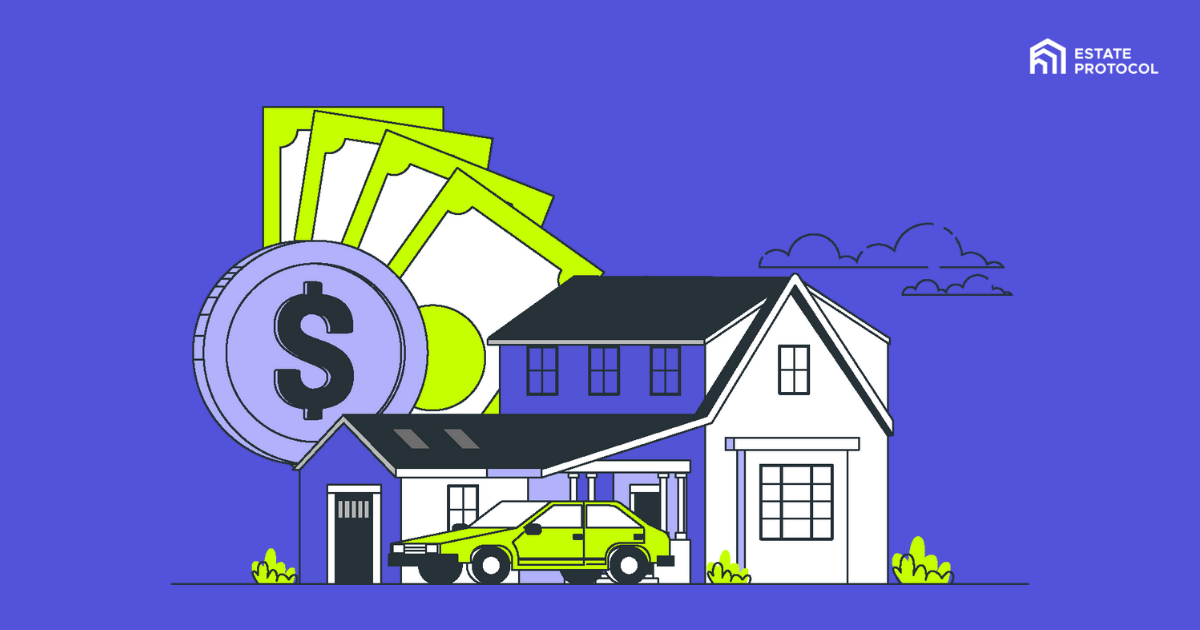
Traditional vs Fractional Ownership Real Estate Investment
Investing in real estate has long been a popular way for investors to build and diversify their portfolios. However, there are two main categories of real estate investment: traditional ownership and fractional ownership. Traditional real estate investment involves buying and owning a property outright, while fractional ownership allows investors to own a share of a property without purchasing the entire property. This article will explore the differences between traditional and fractional ownership real estate investment to help you determine which option is right for you.
Key Takeaways:
- Traditional real estate investment involves owning a property outright.
- Fractional ownership allows investors to own a share of a property without buying the entire property.
- Fractional ownership provides lower capital requirements and the ability to diversify a real estate portfolio.
- Challenges of fractional ownership include limited control and potential conflicts.
- The future of fractional ownership real estate investment is promising with steady growth and increasing demand.
What is Fractional Ownership Real Estate Investing?
Fractional ownership is a type of real estate investment that revolutionizes the concept of timeshares by leveraging blockchain technology and tokenized assets. While traditional timeshares often come with ongoing fees and low resale value, fractional ownership offers a more lucrative and flexible investment opportunity.
The use of blockchain technology ensures that assets are securely tokenized and locked within a smart contract, allowing them to be divided into equal value tokens that can be bought and sold.
This innovative approach allows investors to own a fraction or share of a high-value property, providing the opportunity to diversify their real estate portfolio without the need for large capital requirements. Fractional ownership opens the door to investment opportunities in luxury properties that were once inaccessible to individual investors.
Through fractional ownership, investors can benefit from the potential appreciation of the underlying property and earn rental income in proportion to their ownership stake. Additionally, this investment model provides a level of flexibility and liquidity, as investors have the option to sell their fractional shares if desired.

Advantages of Fractional Ownership Real Estate Investing
Fractional ownership real estate investment offers several advantages over traditional real estate investment:
- Reduced capital requirements: Investors can enter the real estate market with a fraction of the capital required for full ownership.
- Diversification: Fractional ownership allows investors to hold fractional shares in multiple properties, spreading their risk and enhancing their portfolio’s diversification.
- Professional property management: Many fractional ownership arrangements include professional property management, relieving investors of the responsibilities and hassles of day-to-day maintenance.
- Flexibility: Investors have the flexibility to sell their fractional shares when they need or want to liquidate their investment.
These advantages make fractional ownership real estate investment an attractive option for individuals looking to enter the real estate market or diversify their investment portfolio.
Note: The following table provides a comparison between traditional real estate investment and fractional ownership real estate investment:
| Traditional Real Estate Investment | Fractional Ownership Real Estate Investment |
|---|---|
| Requires purchasing the entire property | Allows ownership of a fraction or share of a property |
| High capital requirements | Reduced capital requirements |
| Limited diversification | Opportunity for diversification |
| Full responsibility for property management | Professional property management often included |
| Less flexibility and liquidity | Greater flexibility and potential liquidity |
Advantages of Fractional Ownership Real Estate Investment
Fractional ownership real estate investment offers several advantages over traditional real estate investment. First, it reduces the barrier to entry by allowing investors to purchase a fraction or share of a property, rather than buying the entire property. This lowers the capital requirements and makes real estate investment more accessible.
Additionally, fractional ownership allows for diversification by enabling investors to hold fractional shares in multiple properties. This diversification helps spread the risk across different assets and can provide a more stable investment portfolio. With traditional real estate investment, purchasing multiple properties may be financially unattainable for some investors, but fractional ownership allows them to gain exposure to different markets and property types.
Professional property management is often included in fractional ownership arrangements. This means that investors do not have to worry about the day-to-day maintenance and management of the property. Instead, a professional property management company takes care of these tasks, allowing investors to enjoy the benefits of real estate ownership without the associated responsibilities.
Flexibility
Fractional ownership also offers flexibility to investors. Instead of being tied to a single property, they have the option to invest in multiple properties or exit an investment if needed. This flexibility allows investors to adapt their real estate portfolios to changing market conditions or personal circumstances. It also provides the potential for liquidity, as investors can sell their fractional shares if they want to exit the investment.

In summary, fractional ownership real estate investment offers reduced capital requirements, diversification opportunities, professional property management, and flexibility. These advantages make it an attractive option for investors looking to enter the real estate market or expand their existing portfolios.
How to invest your stablecoins in Fractional Real Estate
If you’re looking for a way to invest your stablecoins, one option you may want to consider is fractional real estate ownership. With fractional ownership, you can purchase a piece of property without having to pay the full price upfront. Instead, you can pay for your share of the property over time, and then rent it out or sell it when you’re ready to move on.
Tokenized real estate is another option to consider if you’re looking for a way to invest your stablecoins. Tokenized real estate is a new way of buying and selling property that makes it possible to fractionalize ownership. With tokenized real estate, you can purchase a piece of property and then trade it on a secondary market. This makes it possible to get exposure to different types of property without having to put all your eggs in one basket.
Both fractional ownership and tokenized real estate offer investors a way to get exposure to the real estate market without having to put all their eggs in one basket. If you’re looking for a way to invest your stablecoins, these are two options you may want to consider.
Here’s how you can invest your stable coins in international real estate
1. Set up an account on Estate Protocol.
2. Choose a property that you want to invest in.
3. Carefully check estimated returns associated with the property.
4. Decide how much you want to spend on the fractional ownership of the property.
5. Buy tokens using stable coins.
6. Start earning rental income instantly.
The Future of Fractional Ownership Real Estate Investment
The market outlook for fractional ownership real estate investment is highly promising, with a steady growth trajectory and increasing demand for commercial properties and high-value assets. This investment model has gained significant appeal among high-net-worth individuals and seasoned investors seeking diversification and unique ownership experiences.
Fractional ownership provides a pathway to profitability, allowing investors to access premium properties with lower capital requirements. By purchasing fractional shares, investors can spread their investment across multiple properties, reducing risk and enhancing potential returns. This flexibility facilitates portfolio diversification and aligns with the buyer profile of those seeking to maximize their real estate investment opportunities.
When it comes to safety measures, thorough due diligence and comprehensive legal agreements play an integral role in mitigating risks associated with shared ownership. Investors can have peace of mind knowing that properties undergo meticulous scrutiny while operating within the parameters of established legal frameworks. As this investment model gains prominence, it is expected that regulatory authorities will develop specific guidelines and regulations that further enhance clarity and security for fractional ownership investors.
The future of fractional ownership real estate investment holds great promise. With a positive market outlook, the potential for profitability, the appeal to discerning buyers, and the implementation of safety measures, this investment model is poised for sustained success in the real estate industry.
Invest in fractional ownership real estate with Estate Protocol
Estate Protocol tokenizes real real estate and bridges the gap between real world assets and the digital world through blockchain. Through Estate Protocol, people from anywhere in the world can invest in fractionalized properties in stable economies.
Summary
Fractional home ownership is an ownership model in which multiple parties own a share of a property, usually in the form of a condo or co-op. This ownership model can offer certain advantages over traditional single-party ownership, such as increased affordability and greater flexibility.
The fractional ownership model has become increasingly popular in recent years, as more and more people are looking for alternatives to traditional home ownership. There are a number of reasons why this ownership model can be appealing.
For starters, fractional ownership can make it more affordable to own a property. When you own a share of a property, you only need to come up with a portion of the purchase price. This can make it much easier to get into the market, especially in expensive markets.
In addition, fractional ownership can offer greater flexibility. You may only need or want to use a property for a certain amount of time each year. With fractional ownership, you can typically purchase a share of a property that gives you the right to use it for a set period of time each year. This can be a great option if you don’t want the hassle or expense of owning a property outright.
If you’re considering fractional ownership, it’s important to weigh the pros and cons carefully. This ownership model isn’t right for everyone, but it can be a great option for the right person.

